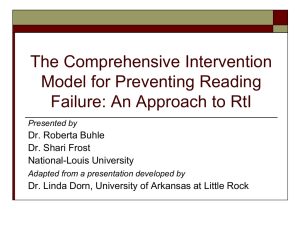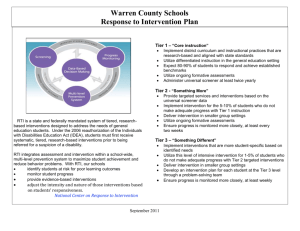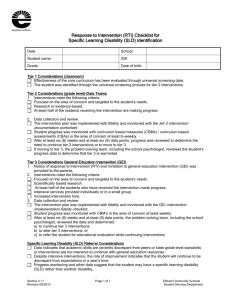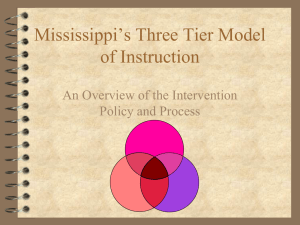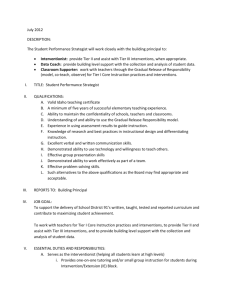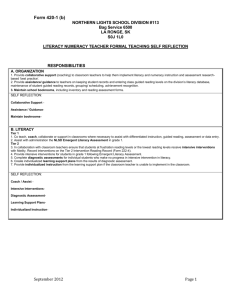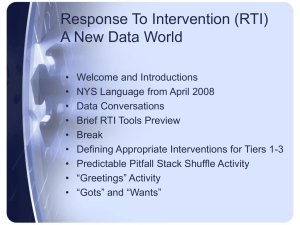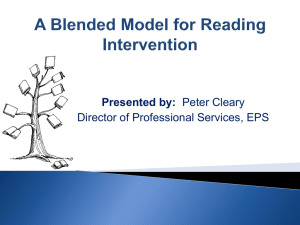PPT - School Administrators of Iowa
advertisement
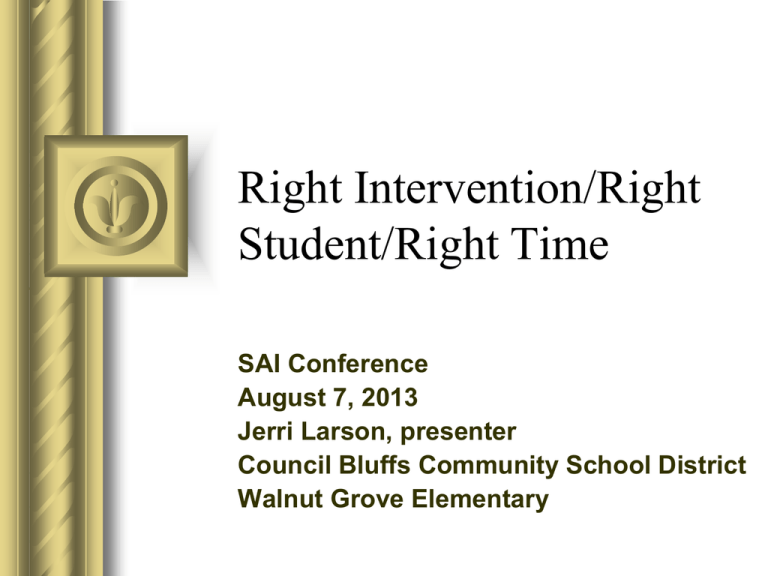
Right Intervention/Right Student/Right Time SAI Conference August 7, 2013 Jerri Larson, presenter Council Bluffs Community School District Walnut Grove Elementary Council Bluffs Literacy Model Features of the Partnership in Comprehensive Literacy (PCL) model – A Framework for Literacy – Coaching and Mentoring – Model Classrooms – High Standards – Accountability – Interventions – Professional Development – Well-Designed Literacy Plan – Technology – Spotlighting and Advocacy (Results that Last: A Model for School Change (Dorn & Soffos, 2003 and Shaping Literate Minds: The Development of SelfRegulated Learners (Dorn & Soffos, 2003) Accountability The work we do along with the results are transparent in the visual of the data wall. We all hold each other accountable for the work we do. We use the data wall as the big picture – adjusting whole group instruction as well as individual students – intervention groups Assessment Schedule Data Wall Example of Data 1st Grade Comparison 4th Quarter 70% 59% 60% 50% 50% 36% 40% Reading 28% 30% 22% 20% 10% 4% 0% 2% 0% Below Basic Basic Proficient Advanced Writing Interventions Layered Intervention Classroom teachers will be responsible for providing the first layer of interventions for students An interventionist (any person who has been trained in providing interventions) Comprehensive Intervention Model (CIM) Intervention schedules are developed collaboratively during intervention team meetings and are based on data (monthly) Students are selected for intervention based on their performance in the classroom and careful assessment of reading and writing A literacy Plan is developed for each child receiving intervention CIM continued Students selected to participate in small group intervention Placement assessments are used for the purposes of identifying a child’s specific areas of strengths and weaknesses An intervention wall is also developed to track the number of students in groups, progress and transparency CIM Continued After placement, progress of all intervention students is discussed each month with a team consisting of the building coach, interventionist, classroom teacher and principal. Four Tiers of Intervention Tier 1 is an intervention provided daily by a classroom teacher Tier 2 intervention is provided in a small group with a specific focus. The recommended group size is 3-4 students. Tier 3 intervention is provided in a small group of 1:2, or 1:1 (Reading Recovery) Tier 4 is a Special Education intervention and may be considered long term. The recommended group size is 1:1 through 1:3 CIM K-5 Group Interventions Interactive Writing Guided Reading Plus Writing Aloud Writing Process Comprehension Focus (Interventions that Work: Comprehensive Intervention Model for Preventing Reading Failure, Dorn & Soffos, 2010) Intervention Wall Child Find Determining Appropriate Intervention Service (DAIS) The Principal and the Coach Key relationship – – – – – – – Meet monthly with interventionists Coordinate cluster visits with principal Choose model classroom teachers Weekly team meetings Plan professional development Meet weekly with principal Meet monthly to discuss all Tier 2 – 4 intervention students – Meet quarterly to discuss all Tier 1 intervention students ESAIL Accountability of the model – ESAIL Walkthroughs Focus today – Criterion 3 and 5
